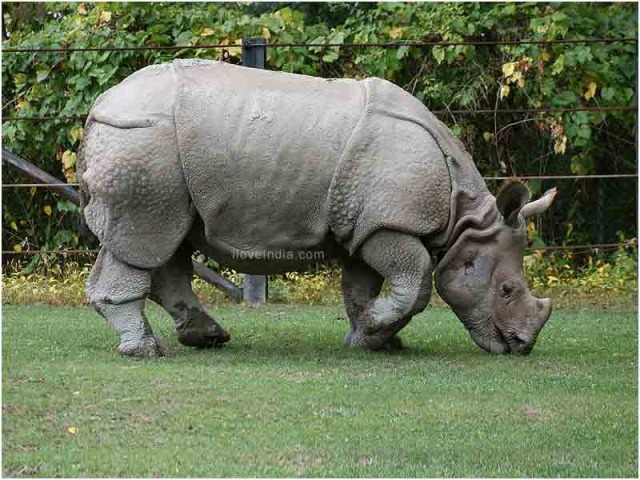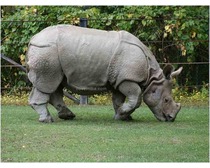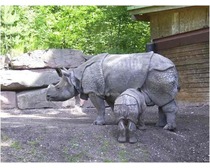Javan rhinoceros is a “critically endangered” species, with less than 100 members in the wild. Explore the article to dwell on some interesting facts & amazing information Javan rhinos.
Facts About Javan Rhinoceros
Javan Rhinoceros, also recognized as Lesser One-Horned Rhinoceros, belongs to the family of Rhinocerotidae, and is one of the five extant rhinoceroses in the world. These rhinos are of the same genus as the Indian Rhinoceros. The historic habitat range of Javan rhinos expands to the islands of Indonesia, India, and China, covering the whole of Southeast Asia. Their species has now been declared ‘’critically endangered’’, with only two known populations out in the wild. This Asian rhinos is not found in the zoos and is believed by many to be oenof the rarest large mammals on earth. Read on to know some more interesting facts & amazing information on the Javan rhino.

Facts About Javan Rhinoceros
Kingdom: Animalia
Phylum: Chordata
Class: Mammalia
Order: Perissodactyla
Family: Rhinocerotidae
Genus: Rhinoceros
Species: R. Sondaicus
Size: 2-4 m (head and body)
Weight: 900 - 2,300 kg
Life Span: 30 to 45 years
Diet: Shoots, Twigs, Fallen Fruit
Habitat: Dense Rainforests With Mud Wallows
Gestation Period: 16 months
Number of Offspring: Not Known
Interesting & Amazing Information On Javan Rhino
- Javan Rhino is an herbivore and one of the three rhino species found in Asia. Once, this rhino species was very common in Indo-china and was often spotted in grasslands and flood plain. However, it now resides in the dense tropical rain forest of Ujung Kulon National Park, in Indonesia.
- Javan rhino is smaller in size than its Indian cousin and bears close resemblance with the Black Rhinoceros, in so far as its size is concerned. The body of this rhino (including head) can extend up to 3.1 to 3.2 m (10 to 10.5 feet), and it can have a maximum height of 1.4 to 1.7 m (4.6 to 5.8 ft).
- The male Javans mark their territory with dung piles and by spraying their urine. For the purpose of communicating territorial limits, they also use scrapes made by the feet, in the ground and twisted saplings.
- These rhinos have a skin with natural mosaic pattern, which gives them an armored appearance. They have a hairless body, with gray or gray-brown skin falling in folds to the shoulder. Fecale samplings and camera traps have determined these physical details about the Javan rino, to avoid the risk of directly interfering with a critically endangered species like theirs.
- Javan rhinos are less vocal than the other rhinos, which is why very few vocalizations of these rhinos have been recorded.
- It is believed that there are less than 100 Javan rhinos left in the wild. Although their number is less than that of the endangered Sumatran rhinos, they have a more protected habitat range.
- Javan rhino mostly leads a solitary life, except for courtship and child rearing. However, groups of these rhinos may assemble near wallows and salt licks.
- These rhinos do not predate on animals or humans. They usually avoid contact with humans, but can attack on feeling threatened.
- Due to their extreme rarity, scientists and environmentalists have not conducted many studies on the endangered Javan rhinos. As a result of this, Javan is the least studied of all the existing rhino species.


See also
More from iloveindia.com
- Home Remedies | Ayurveda | Vastu | Yoga | Feng Shui | Tattoos | Fitness | Garden | Nutrition | Parenting | Bikes | Cars | Baby Care | Indian Weddings | Festivals | Party ideas | Horoscope 2015 | Pets | Finance | Figures of Speech | Hotels in India : Delhi | Hyderabad | Chennai | Mumbai | Kolkata | Bangalore | Ahmedabad | Jaipur
- Contact Us Careers Disclaimer Privacy Policy Advertise With Us Lifestyle Sitemap Copyright iloveindia.com. All Rights Reserved.





